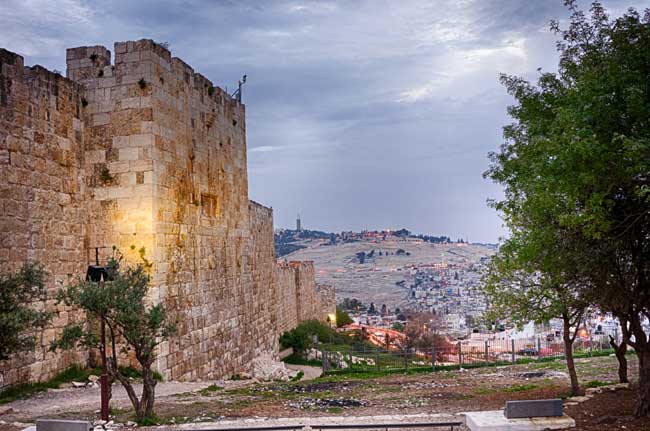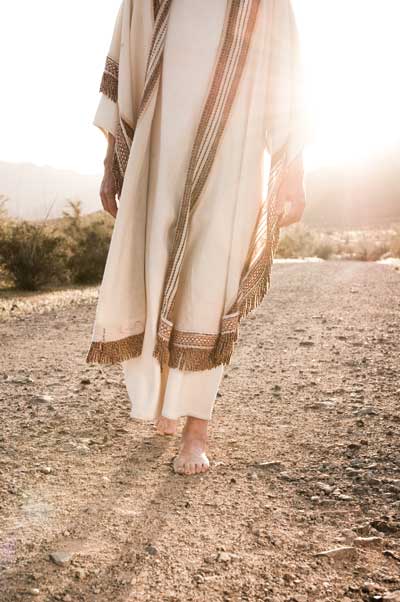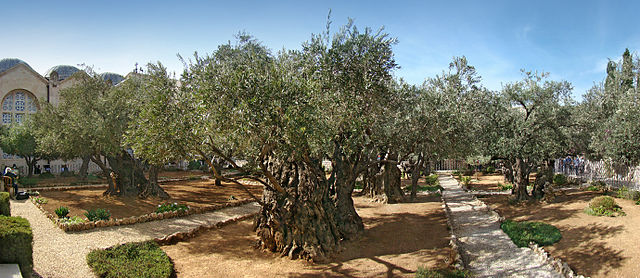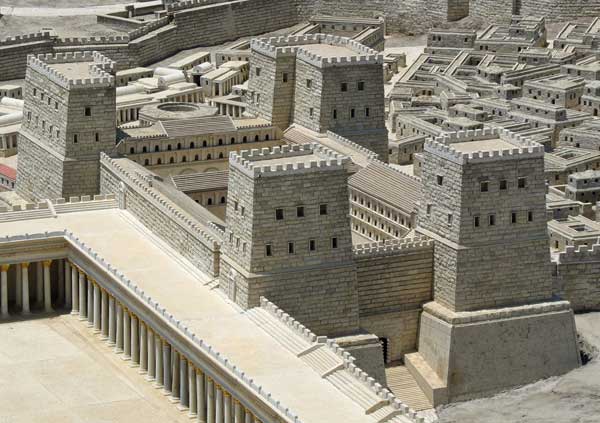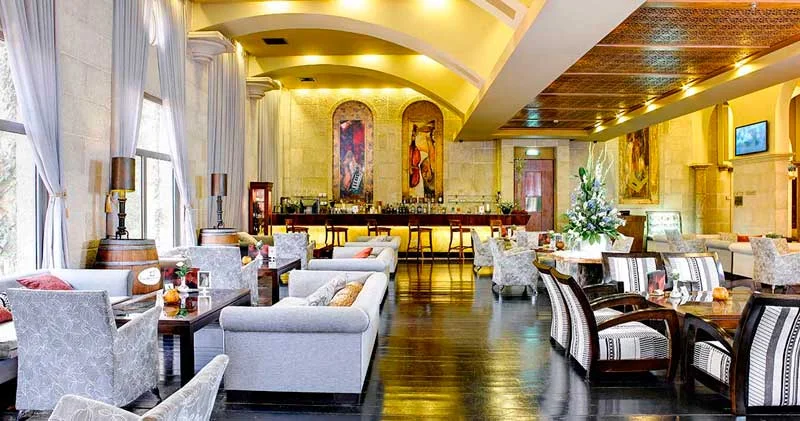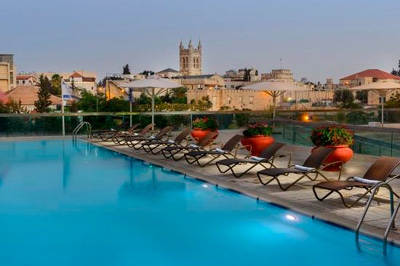Jerusalem
A JOURNEY TO JERUSALEM
In the next phase of his ministry, Jesus decided to leave Galilee in order to reach out to the dispersed Jewish communities living to the north and east of Israel. This was to fulfil his mission to spread his teachings to the ‘lost sheep of the house of Israel’, Matthew 10:6.
Jesus and his disciples travelled by boat to the ‘land of the Gerasenes’ beyond the eastern shore of the Sea of Galilee. This territory formed a federation of ten predominantly Hellenistic cities in what is known today as Syria and northern Jordan. It was here that Jesus exorcised a man possessed of many evil spirits. Mark 5:1-13.
THE CITY OF PEACE
Jesus then made his way to Jerusalem, known, in ancient Hebrew, as The City of Peace. Today it is a significant city for all three Abrahamic religions: Christianity, Judaism and Islam. It was here that the annual Jewish sacrifice was performed, and Jesus knew that he would become the ultimate and everlasting sacrifice by declaring, “See, we are going up to Jerusalem. And the Son of Man will be delivered over to the chief priests and scribes, and they will condemn him to death and deliver him over to the Gentiles to be mocked and flogged and crucified, and he will be raised on the third day.” Matthew 20:18-19.
As he entered the city, the Passover preparations had begun, and hundreds of thousands of Jews from Israel, and beyond, were travelling to Jerusalem to fulfill their religious obligations. They would ritually purify themselves in the Mikvahs (ceremonial pools) by full immersion, before taking part in the temple rites and sacrifices. One hundred Mikvahs resembling large bathtubs, or small garden ponds, have been found around the walls adjacent to Herod’s Temple.
“Rejoice greatly, Daughter Zion! Shout, Daughter Jerusalem! See, your king comes to you, righteous and victorious, lowly and riding on a donkey, on a colt, the foal of a donkey.
”
THE TRIUMPHANT ENTRY
Jesus made a triumphant entry into Jerusalem and was welcomed by the crowds as King and Messiah. He had instructed his disciples to untie and bring him a colt to ride on, fulfilling a prophecy given approximately 500 years before.
Jesus then entered the Temple to teach, but was angered to find market traders buying and selling in the Court of the Gentiles. Making a whip of cords, he drove them all out of the temple, overturning their tables and pouring out the coins of the money-changers.
He then returned to the Temple and taught there daily, but the religious leaders and Pharisees began plotting to kill him.
GETHSEMANE
After celebrating the Passover meal together, Jesus brought his disciples to an olive grove called Gethsemane, on the Mount of Olives. The name Gethsemane may originate from the Hebrew word, gat-shemanim (press of oils).
It was here that Jesus was arrested and taken to the palace of Caiaphas, the High Priest, where the religious leaders and elders had gathered to interrogate him. At the same time, in one of the outer Palace courts, Peter denied Jesus three times before the cock crowed.
THE HOUSE OF CAIAPHAS
The historian, Josephus, records that during the time of Jesus, the Palace of the High Priest, Ananias, was located near the eastern part of the Upper City. The house was not only mentioned in the Bible, but also later on, became the site of a Christian church, which is traditionally associated with this site.
THE TRIAL
Jesus’ trial took place at the Praetorium, where the Roman prefect, Pontius Pilate, was staying during the Passover. Two possible praetorium sites in Jerusalem have been proposed: the Antonia Fortress and Herod's Palace. Pilate was reluctant to condemn Jesus, yet the chief priests and leaders argued that he was the instigator of a revolutionary group and, under Roman law, should be condemned to death by crucifixion. It was the governor’s custom to release one prisoner each year at Passover, so Pilate decided to offer the crowds ‘The King of the Jews’. However, they shouted for the release of another prisoner, Barabbas, who had been convicted with others of murder during an insurrection. His name in Aramaic means Son of the father! So Pilate was compelled to hand over “The Son of the father” and execute the true “Son of the Father”.
THE VIA DOLOROSA
After the trial, Jesus was beaten and tortured and led to the place of execution, Calvary, or in Aramaic, Golgotha, meaning “Place of the Skull”.
Although there has been debate over the exact route, The Road of Sorrows is believed to be the path that Jesus took to Golgotha. It contains 14 Stations of
“‘And when they had crucified him, they divided his clothes among themselves by casting lots.’ ”
THE CRUCIFIXION
At Golgotha, Jesus was crucified, in fulfilment of a prophesy given by King David over a thousand years before.
Psalm 22:18 Dogs surround me, a pack of villains encircles me;they pierce my hands and my feet. All my bones are on display; people stare and gloat over me. They divide my clothes among them and cast lots for my garment.
‘And when they had crucified him, they divided his clothes among themselves by casting lots.’ Matthew 27:35
Custom dictated that Jesus’ body be taken to a burial ground for criminals, but one of the Sanhedrin, Joseph of Arimathea, intervened. He was a secret believer and persuaded Pilate to release Jesus’ body to him. He then ‘wrapped it in the linen cloth, and laid it in a tomb that had been hewn out of the rock’, Mark 15:46
Olive Tree
Jerusalem
Grand Court Hotel
Jerusalem
The hotel is located in the city centre, just a short walk from the Old City, abundant in important holy sites, colourful markets, and notable historical and cultural attractions. Enjoy meals and drinks in the large, sunlit dining room, on the garden terrace, and in the friendly lounge bar. The luxurious pool and sundeck, which overlook the Old City, are a hotel highlight.
The newly renovated hotel was built around an ancient olive tree. Legend has it that the olive tree provided shade for caravans of pilgrims just before they entered the Holy City of Jerusalem. There are those who claim that to this very day as you relax in the hotel's Tree Garden Café you can still hear the strings of King David's harp serenading pilgrims.


